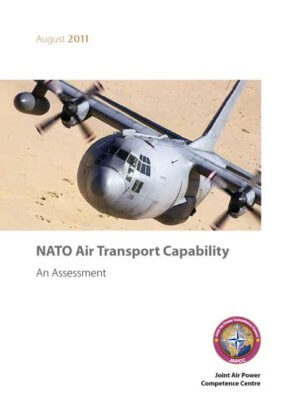“Supply and Transport stand or fall together; history depends on both.”
Winston Churchill
Objective
The Objective of Air Transport (AT) is best encapsulated in the Allied Tactical Publication (ATP) 3.3.4. Volume I1, as follows:
AT enables the global, regional and local movement of personnel and materiel, both military and civilian. With acknowledged limitations in payload compared with other modes of transport, AT is a fast and versatile way to deploy, sustain and redeploy forces;
AT is a fundamental enabler of rapid movement of forces, especially when ground threats or terrain features/conditions hamper freedom of movement. Due to its responsiveness, speed of execution and global range, AT also offers the most effective means to enable and sustain the rapid, even decisive, projection of Air Power, in particular to distant theatres and to remote locations;
AT operations range from the low-key insertion of Special Forces, through the maintenance of routine inter- and intra-theatre airbridges and hub-and-spoke operations, to full spectrum airborne operations which enable concentration of combat power at high tempo. Moreover, a credible capability to conduct airborne operations will force an opponent to reserve and confine a number of forces in order to counter this potential threat to his vital assets. An airborne operations capability constitutes an important element of deterrence, coercion, diversion and surprise;
AT is vital for Aeromedical Evacuation (AE) from austere locations. Where risks to life in combat are high, intra- and inter-theatre AT underpin strongly the moral component of fighting power; it is often the only way to transport casualties to specialist medical support within the critical timeframe required.
Aim and Scope
This AT Assessment is a source document with the principal aim of underscoring the importance of Strategic and Tactical AT by raising awareness of current and emerging AT issues across the NATO community. This Assessment describes and analyses the current NATO military AT inventory and supporting multinational agencies, identifies problems and recommends possible solutions. Ultimately, this AT Assessment endeavours to contribute to standardisation and interoperability across the Alliance.
Assumptions
This AT Assessment is based upon the following assumptions:
NATO AT capability is formed from the contributions of the respective member nations. Whilst NATO has encouraged these nations to procure the necessary platforms to meet NATO’s Level of Ambition, the reality is that the majority have, historically, procured equipment based on national (not Alliance) requirements and, for the purposes of this Assessment, it is assumed that this policy will not change in the short-to-medium term;
This Assessment considers the NATO AT inventory. It does not address the efforts of, or the linkage to, the European Union;
The delineation between Strategic and Tactical AT is not defined by range but by the Area of Operations. For the purposes of this assessment, Strategic AT refers to inter-theatre AT and Tactical AT refers to intra-theatre movements;
This Assessment considers only Fixed-Wing and Tilt-Rotor aircraft, Rotary-Wing platforms are not considered;
AT cannot be viewed in isolation. The deployment, sustainment and redeployment of forces can also be achieved through surface (land and sea) movements, or a combination of both surface and air transportation. It is not the intention of this document to cover surface movements;
In terms of the number of aircraft, and the overall capacity of NATO’s AT capability, it is clear that 100% of the maximum potential AT requirement can never be satisfied. The requirement level will change during peacetime versus the various (inherently non-linear) phases of an operation with any capability gaps potentially served by (short-term) commercial means.
Classification
This Assessment has been compiled from open sources and previous studies. It therefore carries no security classification and is releasable to the public.











